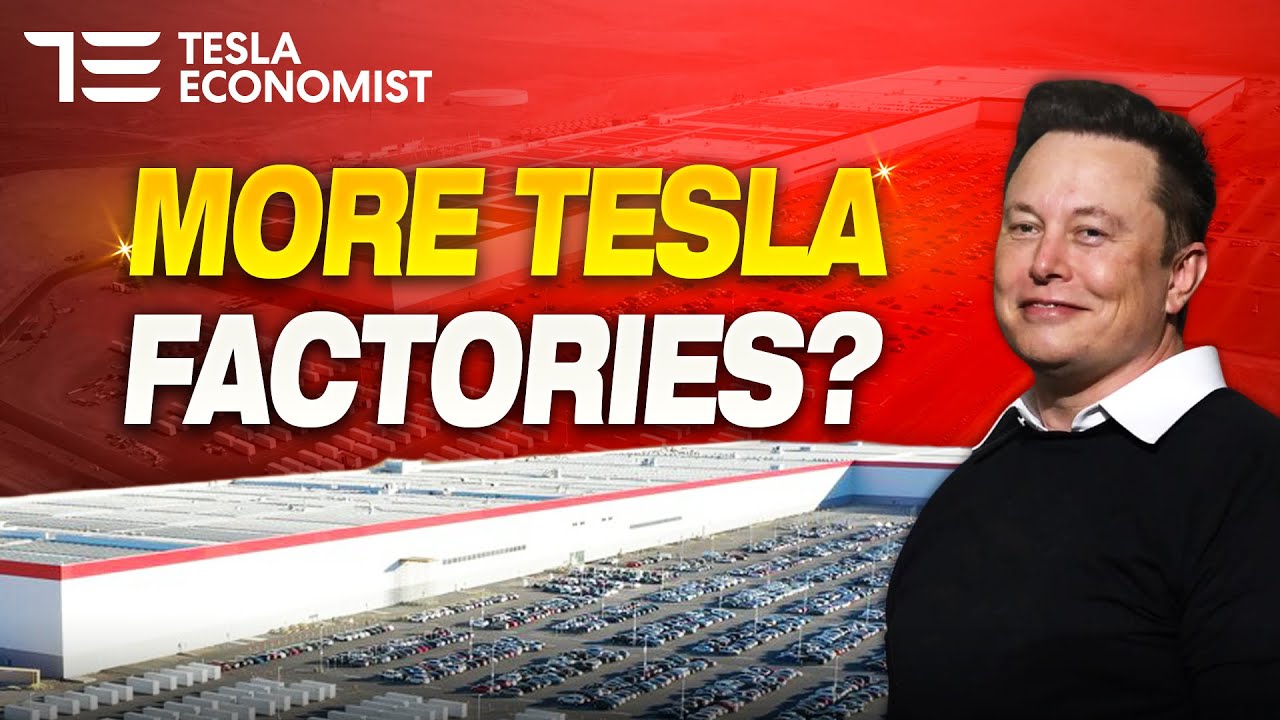Giga Berlin Expansion, Potentially China Too, Tesla Expanding Fast
Unleash Your Creative Genius with MuseMind: Your AI-Powered Content Creation Copilot. Try now! 🚀
In a world where innovation is the name of the game, Tesla continues to dazzle us with its audacious plans for expansion. You've probably heard the buzz that Tesla has submitted an application for a massive expansion in Berlin, Germany, going from 500,000 to a staggering 1 million vehicles. What's even more mind-blowing is their claim to achieve this without increasing water consumption, a factor that had previously limited their expansion in Germany.
But what's really got us all on the edge of our seats is the burning question: What will this new factory produce? Is it going to be a Model Y extension, or perhaps an entirely new vehicle manufacturing technique aimed at reducing costs? Well, let's take a closer look at what Elon Musk and his team might have up their sleeves.
A Factory Beyond Expectations
One thing we can rule out is the possibility of this factory churning out more Model Ys. With ample exports to China, it's safe to say that demand for Model 3s doesn't match the feverish craze we've seen for the Model Y. And if you were holding out for a semi-truck factory, well, the numbers just don't add up. Producing 500,000 semi-trucks a year would be a monumental feat, even for Tesla.
Moreover, it's highly unlikely that Tesla will rely on vehicles equipped with the 4680 cells or high-energy dense nickel batteries. Instead, the smart money is on them opting for LFP (Lithium Iron Phosphate) cells. While BYD has been supplying Tesla with LFP Blade batteries, it's doubtful they could meet the demands of a whole new factory. In all likelihood, Tesla will turn to CATL (Contemporary Amperex Technology Co. Limited), their largest supplier, and CATL's upcoming battery plant in Hungary, perfectly positioned for efficient shipment to Germany within the EU.
The LFP Connection
If Tesla's new Berlin facility has a capacity for 500,000 vehicles, it would require roughly 30 GWh (Gigawatt-hours) of cells annually. By convenient coincidence, CATL's new factory boasts a capacity of 100 GWh, with plans to supply other automakers as well. While Tesla might become their largest customer, it's evident that CATL is gearing up for a significant role in the electric vehicle revolution.
But the real question remains: What will roll off the assembly line in Berlin? If it's not the usual suspects - Model 3, Y, S, X, Roadster, or Cybertruck - what's left on the table?
The Great Tesla Mystery
At Tesla's recent investor day, they tantalized us with a glimpse of two new vehicles - a van and a compact car. For Mexico, the smart money is on the van, given that it wouldn't cannibalize Model 3 sales, and compact vehicles aren't as hot in the US market. Vans have a larger price tag, promising greater profits per sale, making them a logical choice.
In South America, some speculate that the compact car might be in the works, but it's less likely. When it comes to Europe, a compact car would make more sense, as they are more popular in this region. Europe doesn't offer the same generous tax credits as the US, so Tesla needs to provide lower-cost options to boost demand.
While it's possible Tesla could launch the van in Europe, producing 500,000 units might be ambitious. On the other hand, 500,000 compact cars a year should fit like a glove. Volkswagen's unveiling of their electric compact, set to hit the market in 2025 at €25,000, adds pressure and competition, but Tesla can leverage its premium brand status and innovative features to stand out.
Shaping the Future
If Tesla manages to build a compact car with a range of around 200 miles, using a small battery, they could potentially bring the cost down to under $30,000, leaving room for a substantial profit margin. Tesla's goal has always been to hit that magic $10,000 profit per vehicle, and these new models, coupled with existing ones, can help them achieve that.
With the expectation of over 20% gross margins and an average selling price of over $47,000, Tesla is poised for significant profits, even without accounting for the Cybertruck, the 4680 Model Y ramp, or the Semi Truck. This translates to a $30 billion gross profit with 3 million vehicle sales - a solid income by any standards.
But that's not all. The energy division is also in the mix, promising further growth.
Expanding on All Fronts
While Berlin's expansion plan is capturing our attention, don't overlook what's happening in Shanghai. The clearing of land in Shanghai hints at the possibility of another factory in the making. After battling through government approval issues, Tesla may finally be making progress, thanks to China's support for domestic battery production.
Tesla's ability to fully own its operations in China, although with a nod to a CATL joint venture, gives them a unique edge in a market that usually demands partnerships with Chinese companies. CATL's impending colossal factory in Shanghai, with a capacity of approximately 100 GWh per year, further bolsters this intriguing prospect.
In conclusion, the future of Tesla is shining brighter than ever. With new factories on the horizon, possibly in Mexico, Berlin, and Shanghai, the company is poised to meet the surging demand for electric vehicles. Whether it's compact cars, vans, or some unannounced marvel, Tesla's innovative spirit and dedication to sustainable energy continue to redefine the automotive landscape. Brace yourselves, for the Tesla revolution is in full swing, and it's bound to electrify the world!
